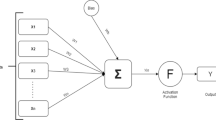Abstract
The main goal of the study was to analyze the total and male entrepreneurial activity. Since it is the highly nonlinear task in this study was applied soft computing approach. Intelligent soft computing scheme support vector regression (SVR) was implemented. The performance of the proposed estimator was confirmed with the simulation results. According to the results, a greater improvement in estimation accuracy can be achieved through the SVR compared to other soft computing methodologies. The new optimization methods benefit from the soft computing capabilities of global optimization and multi-objective optimization rather than choosing a starting point by trial and error. A systematic approach was carried to predict the entrepreneurial activity by the SVR methodology. The performance of the SVR approaches compared to the results from ANN and GP showed interesting improvements in the prediction system. SVR predictions with the polynomial kernel function are superior to other methodologies in terms of root-mean-square error and coefficient of error.


Similar content being viewed by others
References
Seuneke P, Bock BB (2015) Exploring the roles of women in the development of multifunctional entrepreneurship on family farms: an entrepreneurial learning approach. NJAS Wagening J Life Sci 74–75:41–50
García M-CD, Welter F (2013) Gender identities and practices: interpreting women entrepreneurs’ narratives. Int Small Bus J 31(4):384–404
Sarfaraz L, Faghih N, Majd AA (2014) The relationship between women entrepreneurship and gender equality. J Global Entrep Res 2:6
Goltz S, Buche MW, Pathak S (2015) Political empowerment, rule of law, and women’s entry into entrepreneurship. J Small Bus Manag 53(3):605–626
Welter F (2004) The environment for female entrepreneurship in Germany. J Small Bus Enterp Dev 11(2):212–221
Verheul I, Stel AV, Thurik R (2006) Explaining female and male entrepreneurship at the country level. Entrep Reg Dev 18(2):151–183
Brush CG, de Bruin A, Welter F (2009) A gender-aware framework for women’s entrepreneurship. Int J Gender Entrep 1(1):8–24
Jamali D (2009) Constraints and opportunities facing women entrepreneurs in developing countries. Gender Manag Int J 24(4):232–251
Ascher J (2012) Female entrepreneurship—an appropriate response to gender discrimination. J Entrep Manag Innov (JEMI) 8(4):97–114
Fletschner D, Carter MR (2008) Constructing and reconstructing gender: reference group effects and women’s demand for entrepreneurial capital. J Socio-Econ 37:672–693
Anthopoulou T (2010) Rural women in local agrofood production: between entrepreneurial initiatives and family strategies. A case study in Greece. J Rural Stud 26:394–403
Ismail VY (2014) The Comparison of entrepreneurial competency in woman micro-, small-, and medium-scale entrepreneurs. Proc Soc Behav Sci 115:175–187
Verheul I, Thurik R, Grilo I, van der Zwan P (2012) Explaining preferences and actual involvement in self-employment: gender and the entrepreneurial personality. J Econ Psychol 33:325–341
Tinkler JE, Whittington KB, Ku MC, Davies AR (2015) Gender and venture capital decision-making: the effects of technical background and social capital on entrepreneurial evaluations. Soc Sci Res 51:1–16
Majeed A (2019) Improving time complexity and accuracy of the machine learning algorithms through selection of highly weighted top k features from complex datasets. Ann Data Sci 6:599–621
Jain P, Garibaldib JM, Hirst JD (2009) Supervised machine learning algorithms for protein structure classification. Comput Biol Chem 33:216–223
Ananthakrishnan S, Prasad R, Stallard D, Natarajan P (2013) Batch-mode semi-supervised active learning for statistical machine translation. Comput Speech Lang 27:397–406
Ye Q, Zhang Z, Law R (2009) Sentiment classification of online reviews to travel destinations by supervised machine learning approaches. Expert Syst Appl 36:6527–6535
Rajasekaran S, Gayathri S, Lee T-L (2008) Support vector regression methodology for storm surge predictions. Ocean Eng 35:1578–1587
Yang H, Huang K, King I, Lyu MR (2009) Localized support vector regression for time series prediction. Neurocomputing 72:2659–2669
Wei Z, Tao T, ZhuoShu D, Zio E (2013) A dynamic particle filter-support vector regression method for reliability prediction. Reliab Eng Syst Saf 119:109–116
Zhang L, Zhou W-D, Chang P-C, Yang J-W, Li F-Z (2013) Iterated time series prediction with multiple support vector regression models. Neurocomputing 99:411–422
Shi Y, Tian YJ, Kou G, Peng Y, Li JP (2011) Optimization based data mining: theory and applications. Springer, Berlin
Qi Z, Tian Y, Shi Y (2013) Robust twin support vector machine for pattern classification. Pattern Recogn 46(1):305–316
Tang H, Dong P, Shi Y (2019) A new approach of integrating piecewise linear representation and weighted support vector machine for forecasting stock turning points. Appl Soft Comput 78:685–696
Chahnasir ES, Zandi Y, Shariati M, Dehghani E, Toghroli A, Mohamad ET, Shariati A, Safa M, Wakil K, Khorami M (2018) Application of support vector machine with firefly algorithm for investigation of the factors affecting the shear strength of angle shear connectors. Smart Struct Syst 22(4):413–424
Author information
Authors and Affiliations
Corresponding author
Additional information
Publisher's Note
Springer Nature remains neutral with regard to jurisdictional claims in published maps and institutional affiliations.
Rights and permissions
About this article
Cite this article
Lakovic, V. Modeling of Entrepreneurship Activity Crisis Management by Support Vector Machine. Ann. Data. Sci. 7, 629–638 (2020). https://doi.org/10.1007/s40745-020-00269-x
Received:
Revised:
Accepted:
Published:
Issue Date:
DOI: https://doi.org/10.1007/s40745-020-00269-x




